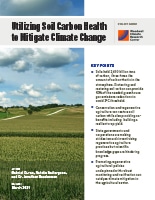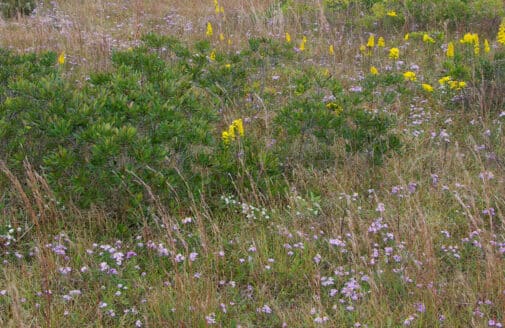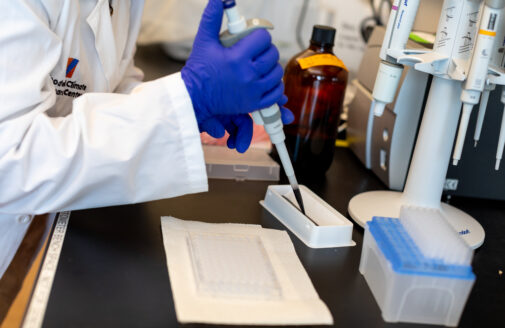Utilizing Soil Carbon Health to Mitigate Climate Change

Key Points
- Soils hold 2,400 billion tons of carbon, three times the amount of carbon that is in the atmosphere. Protecting and restoring soil carbon can provide 10% of the needed greenhouse gas emissions reductions to avoid 2°C threshold.
- Conservation and regenerative agriculture can restore soil carbon while also providing co-benefits including building a resilient crop yield.
- State governments and corporations are making strides towards incentivizing regenerative agriculture practices but scientific knowledge gaps are hindering progress.
- Promoting regenerative agricultural policies underpinned with robust monitoring and verification can catalyze climate mitigation in the agricultural sector.

The Impact of Farming in the United States
In order to prevent the most catastrophic impacts of climate change, nations must dramatically reduce fossil fuel burning and deforestation while also increasing rates of carbon sequestration. The only immediately deployable and scalable technologies we have to sequester carbon are natural climate solutions (NCS)—land management practices that increase carbon storage in forests, wetlands and soils. Wide scale adoption of conservation agriculture, a set of practices that minimize soil disturbance, maintain permanent soil cover and utilize crop rotations, has the potential to play a critical role in cutting greenhouse gas (GHG) emissions by prioritizing soil carbon sequestration. U.S. agriculture is a multi-billion dollar industry and is integral to the domestic economy. Domestic agriculture and related industries contribute 5.2% to the U.S. gross domestic product (GDP), an estimated $1.109 trillion, while providing 4.6% of the nation’s employment1.
Current agricultural practices, including tillage and inefficient grazing patterns, have contributed nearly a quarter of all global carbon emissions since the pre-industrial era levels, an estimated 116 billion tons added to the atmosphere2. The continuation of such practices continue to deplete soil carbon, emitting additional GHG emissions while also driving soil erosion, the loss of nutrients, and the contamination of nearby water bodies.
Adopting best practices for protecting and restoring soil carbon in agricultural fields can provide 10% of the needed emission reductions to avoid 2°C of warming.3
The Role of Soil Carbon
Soil carbon refers to the organic carbon bound up as the major component of soil organic matter (SOM). The carbon, nitrogen and phosphorus in SOM lay the foundation for numerous ecosystem services that support both natural and agricultural ecosystems. Globally, soil holds 2,400 billion tons of carbon, three times the amount of carbon that is in the atmosphere4.
Rebuilding and maintaining healthy levels of SOM in depleted soils is critical for maintaining a resilient agricultural sector in the face of changing climate patterns because SOM is a key determinant of numerous functions of healthy soil. Organic matter provides the energy needs of soil microbes; its decomposition releases plant available nutrients, and it is a key building block of soil structure leading to greater water infiltration and retention.
Despite these critical roles, SOM continues to be depleted in many regions of the world. Incentives to promote SOM retention are hindered by difficulty quantifying the impact specific management practices will have. While there is strong scientific consensus that improved management can sequester carbon in general, scientists are not always able to provide accurate predictions at the local level.
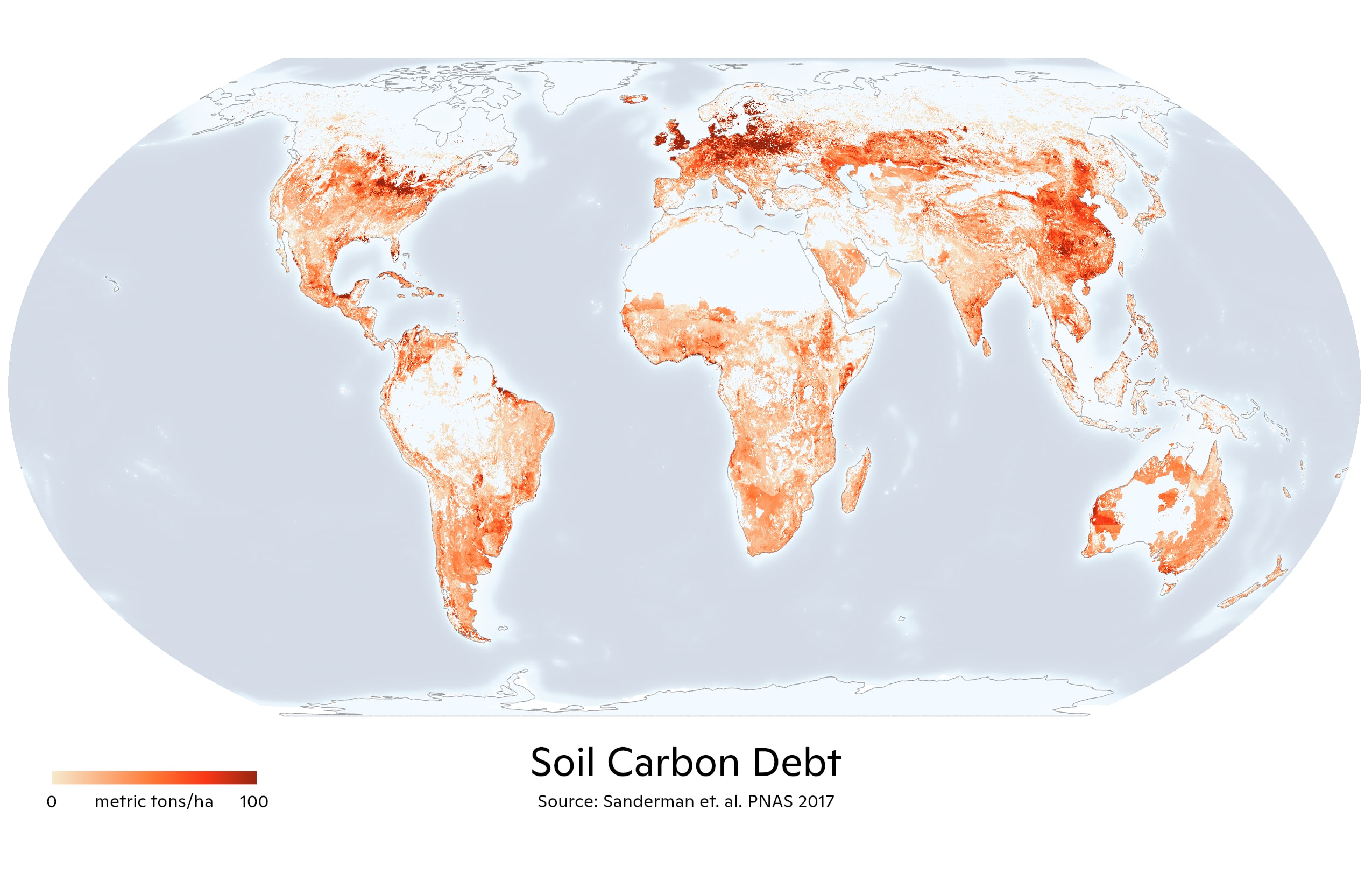
Implications for Altering Agriculture and Land Use
Regenerative agriculture embraces all the principles of conservation agriculture, but takes it a step further by managing a farm as an integrated system trying to continually improve environmental, agronomic and societal outcomes including soil carbon sequestration. Regenerative practices, including maintaining year-round green cover, maximizing crop diversity and integrating livestock into cropping systems, can reap considerable co-benefits like reducing fuel costs, increasing resilience of crop yields, and improving soil health and water retention.
Due to the potential of regenerative agriculture, some companies are utilizing it to offset their carbon emissions. For example, Indigo Ag and Nori generate an estimate of a farmers’ climate mitigation impact and sell carbon capacity storage per ton to industries that are looking to offset their carbon emissions. While Indigo works with farmers to sponsor soil sampling and verification and incorporate that data into their models, Nori uses third-party tools to estimate carbon reductions for their model.
While there is a growing farmer-led movement of rebuilding soil carbon, uptake of conservation and regenerative agricultural practices remain low. Federal government assistance and incentives can play a major and necessary role in bridging scientific knowledge gaps and greatly accelerating adoption rates. Some crucial policies include appropriating money to research, incentivizing farmers to plant cover crops, developing tax incentives for carbon sequestration and maintenance of soil health, providing subsidies for purchasing new equipment, and funding outreach and education.
States across the country have passed bills that clearly state the importance of maintaining soil health and sequestering soil carbon through regenerative agricultural practices. For instance, in Nebraska farmers receive financial incentives to plant cover crops and can receive between $20-45/acre based on the number5 of species of cover crops planted. Other states, like Illinois, have appropriated money for furthering scientific research and surveying on agricultural fields. There is opportunity for similar policies on the national level.
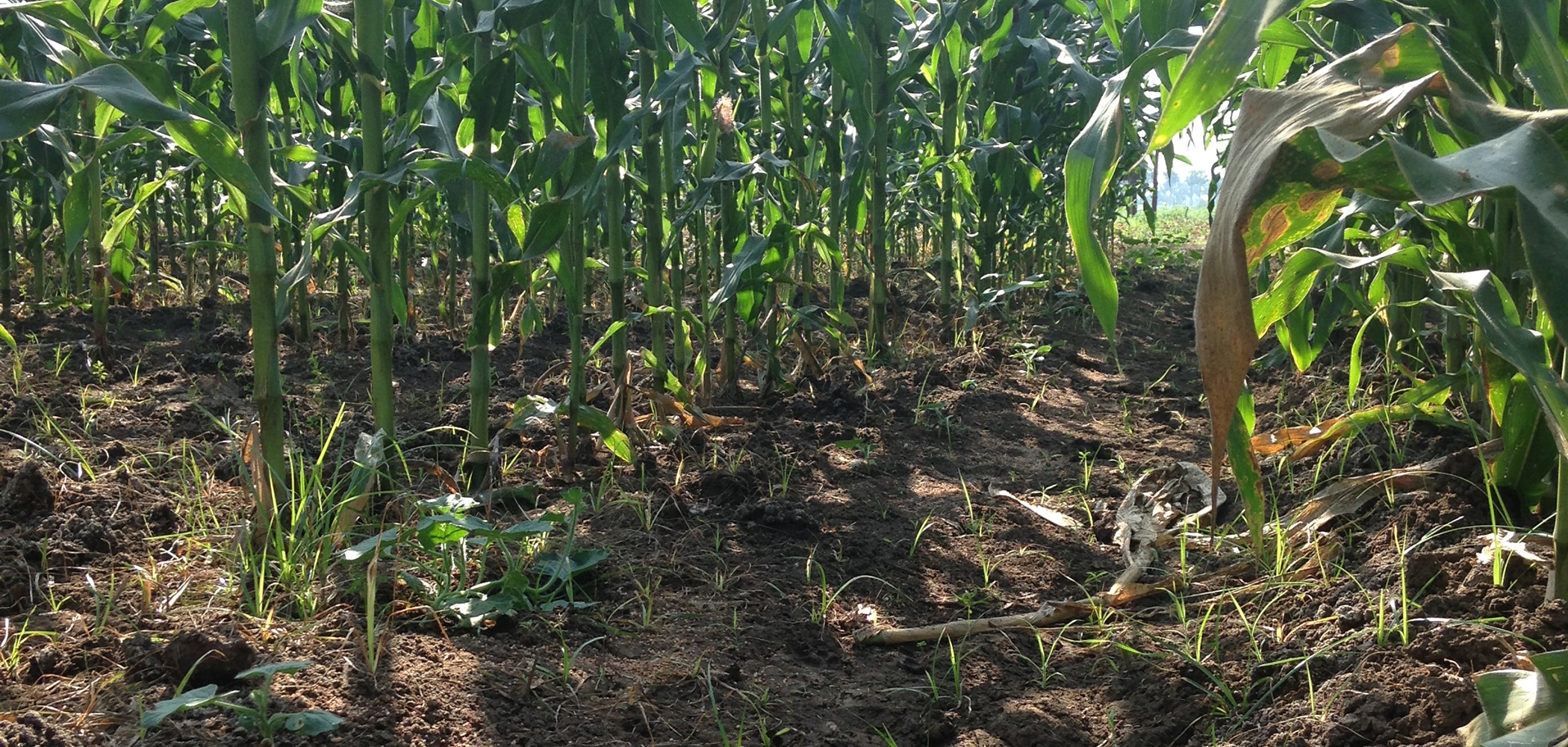
Conclusion and Recommendation
Scientists and policymakers understand that natural climate solutions, including rebuilding and sequestering soil carbon, are vital to mitigating climate change. Any effective soil carbon policy, however, relies on robust monitoring and verification. The current frameworks and programs for evaluating carbon removal projects are often fragmented, inconsistent, and outdated. This acts as an obstacle to deploying soil carbon solutions in farms across the country. Any policy solution must be underpinned by consistent guidelines for soil health indicators and sampling methodology (including field-level data) as well as a reliable monitoring and reporting framework.
Footnotes
1. Economic Research Service. (2020, December 16). Ag and Food Sectors and the Economy [USDA]. http://bit.ly/3aRmPjU
2. Popkin, G. (2020, March 31). Can ‘Carbon Smart’ Farming Play a Key Role in the Climate Fight? Yale Environment360. http://bit.ly/3abxMO3
3. Bossio, D. A., et al. (2020). The role of soil carbon in natural climate solutions. Nature Sustainability, 3(5), 391–398. https://doi.org/10.1038/s41893-020-0491-z
4. Janzen, H. H. (2006). The soil carbon dilemma: Shall we hoard it or use it? Soil Biology and Biochemistry, 38(3), 419–424. https://doi.org/10.1016/j.soilbio.2005.10.008
5. LB.729. Adopt the Soil Health and Productivity Incentive Act. Pending Hearing on Feb. 19, 2019.
References




